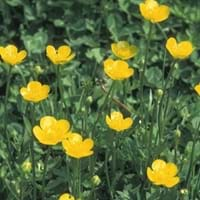Life Span
Annual and Perennial
Perennial
Type
Bulb or Corm or Tuber
Bulb or Corm or Tuber
Origin
Central America, South America
Hybrid origin
Types
Vine, Flowering plant
Not available
Number of Varieties
Not Available
Habitat
All sorts of environments, Along Railroads, Banks, Moist Ditches, Roadsides, rocky banks of streams
Banks, meadows, Roadsides, Shores of rivers or lakes
USDA Hardiness Zone
10-13
Not Available
Habit
Vining/Climbing
Clump-Forming
Minimum Width
Not Available
Flower Color
Purple, Rose
White, Yellow, Red, Green
Flower Color Modifier
Bicolor
Bicolor
Fruit Color
Not Available
Not Available
Leaf Color in Spring
Purple, Dark Green, Black
Not Available
Leaf Color in Summer
Light Green
Light Green
Leaf Color in Fall
Several shades of Green
Several shades of Green
Leaf Color in Winter
Light Green
Light Green
Leaf Shape
Acicular
Lobed and toothed
Plant Season
Spring, Summer, Fall, Winter
Spring, Summer, Winter
Sunlight
Full Sun, Partial Sun
Full Sun
Growth Rate
Very Fast
Fast
Type of Soil
Clay, Loam, Sand
Loam
The pH of Soil
Acidic, Neutral, Alkaline
Acidic, Neutral
Soil Drainage
Well drained
Well drained
Bloom Time
Late Spring, Early Summer, Summer, Late Summer, Early Fall, Fall, Late Fall
Not Available
Tolerances
Drought
Variety of soil types
Where to Plant?
Container, Ground
Ground
How to Plant?
Cuttings, Leaf Cutting, Tuber propagation
Divison, Seedlings
Plant Maintenance
Medium
Low
Watering Requirements
Keep the Soil well drained, Needs very little water
Average Water Needs
In Summer
Lots of watering
Lots of watering
In Spring
Moderate
Moderate
In Winter
Average Water
Average Water
Soil pH
Acidic, Neutral, Alkaline
Acidic, Neutral
Soil Type
Clay, Loam, Sand
Loam
Soil Drainage Capacity
Well drained
Well drained
Sun Exposure
Full Sun, Partial Sun
Full Sun
Pruning
Remove damaged leaves, Remove dead branches, Remove dead leaves
Remove damaged leaves, Remove dead branches, Remove dead flowers, Remove dead leaves
Fertilizers
All-Purpose Liquid Fertilizer
All-Purpose Liquid Fertilizer
Pests and Diseases
Red blotch
Powdery mildew
Plant Tolerance
Drought
Variety of soil types
Flower Petal Number
Single
Not Available
Foliage Texture
Coarse
Not Available
Foliage Sheen
Matte
Not Available
Attracts
Aphids, Beetles, Cutworms, Insects, Mites, Whiteflies
Butterflies
Allergy
Abdominal pain, allergic reaction, Nausea, Skin rash, Twitching of face
Pollen
Aesthetic Uses
Not Used For Aesthetic Purpose
Beautification, Cottage Garden, Ground Cover, Landscape Designing, Showy Purposes
Beauty Benefits
Not Available
Not Available
Environmental Uses
Air purification
Air purification
Medicinal Uses
Cures constipation, Fiber, Low calories, lowering blood pressure, Potassium, ß-carotene, Vitamin A, Vitamin C
Anodyne, Arthritis, Bronchitis, Nerve pain
Part of Plant Used
Leaves, Root, Shoots, Stem, Tuber
Flowers, Leaves
Other Uses
Starch, Used As Food, Used as Ornamental plant
Used as Ornamental plant
Used As Indoor Plant
Sometimes
No
Used As Outdoor Plant
Yes
Yes
Garden Design
Container, Edible, Groundcover, Hanging Basket, Herb / Vegetable, Mixed Border, Rock Garden / Wall, Vine
Bedding Plant, Container, Cutflower, Mixed Border
Botanical Name
IPOMOEA batatas 'Blackie'
Ranunculus acris
Common Name
Blackie Sweet Potato Vine, Sweet Potato Vine
Ranunculus, meadow buttercup, tall buttercup, common buttercup, giant buttercup
In Hindi
शकरकन्द
Ranunculus
In German
Süßkartoffel
Ranunkel
In French
Patate douce
Ranunculus
In Spanish
Ipomoea batatas
ranúnculo
In Greek
Sweet potato
Ranunculus
In Portuguese
Batata-doce
Ranogkylos
In Polish
Wilec ziemniaczany
Ranogkylos
In Latin
Ipomoea batatas
Ranogkylos
Phylum
Tracheophyta
Magnoliophyta
Class
Magnoliopsida
Magnoliopsida
Order
Solanales
Ranunculales
Family
Convolvulaceae
Ranunculaceae
Clade
Angiosperms, Asterids, Eudicots
Angiosperms, Eudicots
Tribe
Not Available
Ranunculeae
Subfamily
Not Available
Ranunculoideae
Number of Species
Not Available
Properties of Sweet Potato Vine and Ranunculus
Wondering what are the properties of Sweet Potato Vine and Ranunculus? We provide you with everything About Sweet Potato Vine and Ranunculus. Sweet Potato Vine doesn't have thorns and Ranunculus doesn't have thorns. Also Sweet Potato Vine does not have fragrant flowers. Sweet Potato Vine has allergic reactions like Abdominal pain, allergic reaction, Nausea, Skin rash and Twitching of face and Ranunculus has allergic reactions like Abdominal pain, allergic reaction, Nausea, Skin rash and Twitching of face. Compare all the properties and characteristics of these two plants. Find out which of these plant can be used as indoor plant. If you are interested to decorate your house and garden, find out aesthetic uses, compare them and select the plant which will beautify your surrounding. Along with beautification, try comparing medicinal and edible uses of Sweet Potato Vine and Ranunculus and you can choose the plant having best and most benefits.
Season and Care of Sweet Potato Vine and Ranunculus
Season and care of Sweet Potato Vine and Ranunculus is important to know. While considering everything about Sweet Potato Vine and Ranunculus Care, growing season is an essential factor. Sweet Potato Vine season is Spring, Summer, Fall and Winter and Ranunculus season is Spring, Summer, Fall and Winter. The type of soil for Sweet Potato Vine is Clay, Loam, Sand and for Ranunculus is Loam while the PH of soil for Sweet Potato Vine is Acidic, Neutral, Alkaline and for Ranunculus is Acidic, Neutral.
Sweet Potato Vine and Ranunculus Physical Information
Sweet Potato Vine and Ranunculus physical information is very important for comparison. Sweet Potato Vine height is 15.00 cm and width Not Available whereas Ranunculus height is 30.50 cm and width 22.90 cm. The color specification of Sweet Potato Vine and Ranunculus are as follows:
Sweet Potato Vine flower color: Purple and Rose
Sweet Potato Vine leaf color: Purple, Dark Green and Black
Ranunculus flower color: White, Yellow, Red and Green
- Ranunculus leaf color: Not Available
Care of Sweet Potato Vine and Ranunculus
Care of Sweet Potato Vine and Ranunculus include pruning, fertilizers, watering etc. Sweet Potato Vine pruning is done Remove damaged leaves, Remove dead branches and Remove dead leaves and Ranunculus pruning is done Remove damaged leaves, Remove dead branches, Remove dead flowers and Remove dead leaves. In summer Sweet Potato Vine needs Lots of watering and in winter, it needs Average Water. Whereas, in summer Ranunculus needs Lots of watering and in winter, it needs Average Water.





